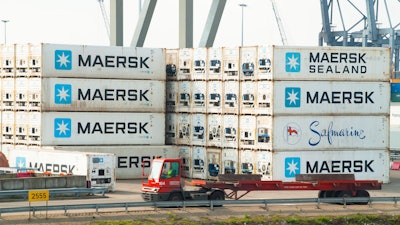
The following article is being presented as an opinion piece.
One of the big questions about American trade policy that has always puzzled me is, why do we think it was good for America to allow all of our trading partners cheap access to all of our markets when they won’t give us the same access?
Table 1 shows that our competitors have tariffs and Value Added Taxes (VATS) that range from 9.2 percent to 26.9 percent, when the U.S. has no VAT and a 3.4 percent average tariff.
COUNTRY TARIFF VAT TOTAL% U.S. Deficit ($billions)
Canada 4.2 5 9.2% -11.6
China 9.9 17 26.9% -253
France 5.1 20 25.1% -12.1
Germany 5.1 19 24.1% -46.2
Italy 5.1 22 27.1% -22.6
Japan 4 8 12% -42.8
Mexico 7.1 16 23.1% -92.2
South Korea ` 13.9 10 23.9% -19.3
Spain 5.1 21 26.1%
United Kingdom 5.1 20 25.1%
United States 3.4 0 3.5%
Source: Coalition for a Prosperous America
Is this really free trade when all of our competitors get to have high tariffs and value added taxes? In a 1986 article in The Folly of Free Trade by John Culbertson, he said, ”We have elevated the economic theory of free trade to the status of a national theology, and we allow its simple dictums as if they were immutable laws." Well, it is still true today, but I think there are many fallacies and when you examine it closely it doesn’t match up to the bold claims of the free-trade economists.
A more practical summary of free trade is described by former U.S. Ambassador Robert Lighthizer, who, as the U.S. Trade Representative, was out on the economic front lines of our trade problems for many years. Lighthizer wrote an op-ed piece for the Economist magazine. Here is a brief summary of some of Lighthizers primary points:
- The U.S. is now the largest importer in the world, which has caused us to also be the world’s largest debtor nation.
- The purchase of securities like stocks, corporate bonds, and Treasury bonds makes for greater demand for dollar assets, thus driving up the strength of the dollar.
- Wall Street loves a strong dollar because it means more sales of stocks and bonds, but the strong dollar is at the heart of the trade deficit problem.
- Our ongoing trade deficits have shipped trillions of wealth to foreign countries in return for foreign goods, and our foreign competitors use the money to purchase our assets and debt instruments.
- Lighthizer said “in a real sense America is trading ownership of its productive assets and economic future for short term consumption."
The Solution - Reciprocity
- Commit to reducing the trade deficit. The government needs to go on the record that the current trade deficit is hurting the economy and commit to policies that will reduce it.
- Expand the tariffs. Table 1 shows the tariffs and value-added taxes from 10 of our competitors. To reciprocate, we need to expand the Trump tariffs to other countries and then selectively raise or lower the tariffs depending on whether the deficit for the product is going up or down. As the trade deficit is slowly reduced, the tariffs for the product would be reduced or eliminated. Tariffs have boosted industrial investment, reshored production in some industries and have supporters on both sides of the aisle.
- Currency misalignment. Currency misalignment is a strategy used by all of our trading partners. Because they always have a surplus with the U.S., they use it to buy our assets, such as U.S. Treasury notes and bonds, which make the value of the dollar artificially high. By making the dollar more expensive, it makes our exports more expensive and makes the foreign countries’ products cheaper. Currency misalignment is illegal under the rules of the International Monetary Fund and the World Trade Organization. We need to enforce the IMF and WTO rules and stop currency misalignment.
- Dollar value. The Currency Misalignment Monitor in Chart 1-2 shows that the dollar is overvalued as much as 48 percent because of currency misalignment by our primary competitors, including the countries in the European Union. So the obvious conclusion is unless we can do something to reduce the value of the dollar, American efforts to reshore might be doomed to fail. The inconvenient truth is that we will never be able to increase exports or reduce the goods trade as the value of the dollar is artificially high.
The mood in Congress is changing, and a strategy of reciprocity may become the answer to level the playing field. If the U.S. wants to build reciprocity into our foreign trade, we need to do four things:
Chart 1-2

Source: Coalition for a Prosperous America
The U.S. can reciprocate by using a Market Access Charge — taxing purchases using a market access charge for all foreign competitors who buy U.S. assets. This would begin to lower the value of the dollar to a trade-balancing price. The plan would require the Federal Reserve to impose a market access charge on foreign investments in the United States. This tax would cover asset purchases including stocks, bonds, real estate, or intellectual property – pretty much everything foreigners might want to buy, except for the goods to be exported.
We know we can stop currency misalignment and lower the dollar value because we have done it in the past. In 1971, Richard Nixon assessed a 10 percent surcharge that coerced our trading partners to raise the value of their currencies. In the 1985 Plaza Accords, President Reagan forced both Japan and Germany to stop manipulation, which resulted in a 30 percent drop in the value of the dollar. Nixon and Reagan proved that the government can successfully intervene on these problems, but since the 1980s no administration has done anything about currency misalignment or the over-valued dollar.
Robert Lighthizer sums it up with his comment from the Economist article. He wrote, ”International trade has largely failed America over the past three decades. Indeed, it is slowly bleeding the country to death.” A strategy of reciprocity is the answer.
Michael Collins is the author of a new book, Dismantling the American Dream: How Multinational Corporations Undermine American Prosperity. He can be reached at mpcmgt.net.






















